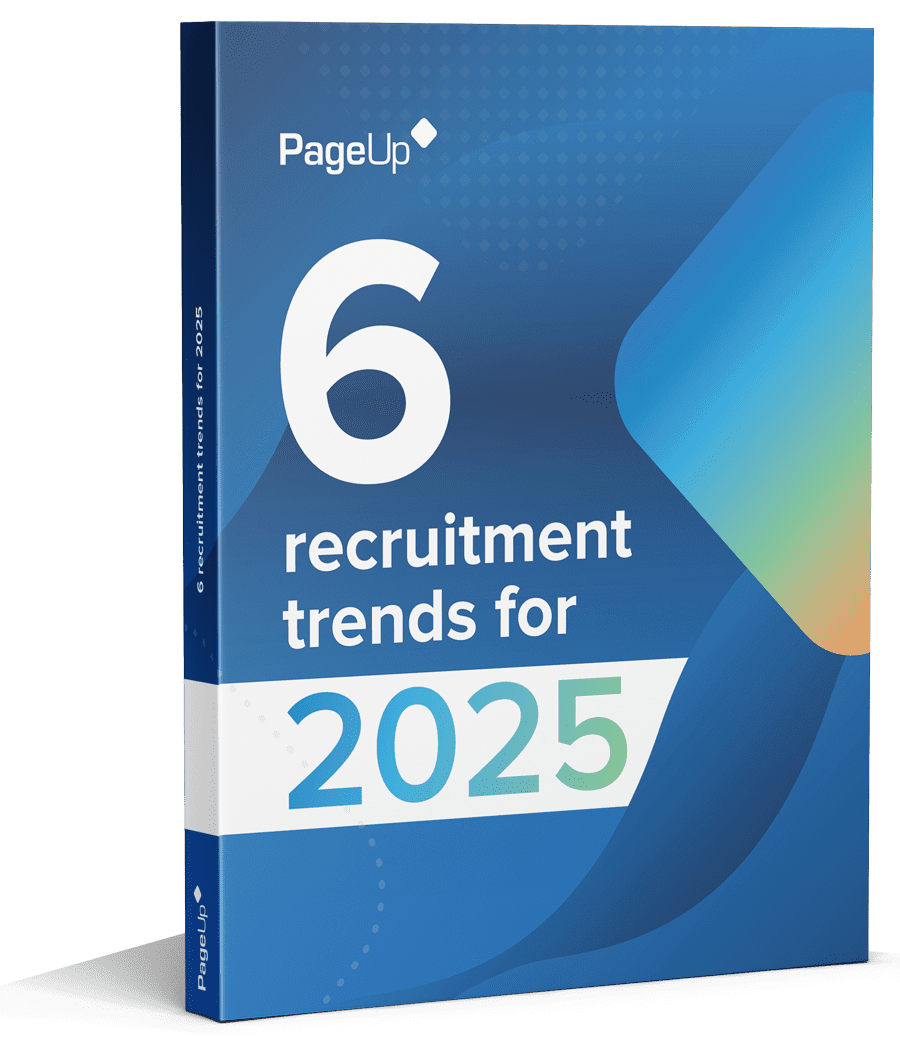CentralisedCentralized vs DecentralisedDecentralized recruitment: what is the difference?
Every organisationorganization has a slightly different way of structuring their HR and talent acquisition functions. Largely, these are split into two models or structures: centralisedcentralized, or decentraliseddecentralized. CentralisedCentralized recruitment is an approach where all hiring responsibilities are consolidated and managed by a central team within an organisationorganization. On the other hand, decentraliseddecentralized hiring means each department or location takes full ownership of its own hiring processes.
Both models offer their pros and cons: for example, centralisedcentralized hiring is generally more scalable. OrganisationsOrganizations can more effectively reduce double-handling and share information and data to streamline decision-making. It’s also much easier to create a consistent candidate experience and showcase a strong, unified employer brand. But sometimes, one central recruiting team in a large organisationorganization can lead to bottlenecks —a hiring team stretched too thin.
DecentralisedDecentralized hiring offers a lot more agility and autonomy, with individual business units each managing their hiring process end-to-end, they are able to make decisions independently. But, without access to centralisedcentralized resources, a decentraliseddecentralized model can lead to double-handling: less visibility of talent pools, weak employer branding, and higher administrative burden —risking a negative impact on candidate experience.
Many higher education institutions operate under a more decentraliseddecentralized model. With each institution often comprising of multiple campuses or departments with different hiring needs, it makes sense to give hiring teams the autonomy to act independently and move fast. But, to enhance their recruitment, many of today’s savvy higher education teams have opted for a blended strategy: using centralisedcentralized tactics to supercharge their decentraliseddecentralized approach.
By centralisingcentralizing some key functions, hiring teams gain access to the best of both worlds. Here are some best practices higher education teams have adopted to centralisecentralize parts of their decentraliseddecentralized hiring processes to attract higher quality talent, provide candidates with a great experience and streamline their approach.
Unified employer branding
Having a recognisablerecognizable employer brand is crucial as it helps organisationsorganizations stand out in a competitive talent market and attract top candidates. 80% of talent teams feel that a strong employer brand is crucial to success in today’s market. But, only 50% of companies feel they’ve got the right strategy in place.
In a decentraliseddecentralized model, one of the ways you can streamline your hiring process and boost candidate experience is by centralisingcentralizing your employer branding. This helps create a recognisablerecognizable brand with consistency across campuses.
Kentucky Community and Technical College System (KCTCS) had this as its core focus when revamping its hiring process. A large school system, with each campus having its own leadership, priorities and culture, the central HR support team needed a way to create unity amongst each of the 16 schools.
“We have 16 entities with independent leadership resulting sometimes in 16 variations of how to do things. When we sought a new provider, the primary focus was consistency, while also overhauling and modernisingmodernizing the overall candidate and user experience.”
Manager of Strategic Talent Acquisition, KCTCS
By overhauling its career site, KCTCS was able to create a unified employer brand, while also giving each campus autonomy, and empowering them to showcase their unique identity. The team used Recruitment Marketing software to create microsites for each campus, with custom content and specialisedspecialized messaging —while the overall branding stayed consistent across each campus. This unified and strong employer brand helped the team to achieve a mammoth 82% application completion rate, while making it easy for each campus to showcase a unique culture.
A consistent and outstanding candidate experience
A consistent and outstanding candidate experience is vital in today’s talent market. It has a significant impact on attracting top talent, building employer reputation, and increasing candidate satisfaction. In a competitive market, companies need to go above and beyond to convince candidates to say “yes”.
While in a decentraliseddecentralized model, a large portion of candidate engagement is handled by the individual business units and hiring managers, it is possible for a central team to provide supporting resources that help to provide a great candidate experience. This could look like:
- The creation of standardisedstandardized templates for role descriptions, job offers, and interview guides
- Using technology to support a consistent application experience
- Establishing workflows to support candidate communications and keep candidates engaged
- CentralisedCentralized FAQs on the career site to make it easy for jobseekers to self-select in or out
While hiring decisions and processes remain with decentraliseddecentralized teams, having a shared-services approach to templates and resources can empower teams to act quickly, and provide a consistent, seamless experience to candidates across the wider institution. UtilisingUtilizing technology is integral here, and is central to creating a seamless process and one source of truth.
These improvements from a standardisedstandardized recruitment experience can also extend to onboarding. For example large and decentraliseddecentralized institution, Michigan State University (MSU), realisedrealized that to bolster retention and improve the candidate experience, they needed a centralisedcentralized onboarding process. Using PageUp, the team embarked on creating a centralisedcentralized onboarding platform that offers accessible resources and easy-to-follow task lists. As part of this initiative, they formalisedformalized offer letter templates for support staff and facilitated orientations for all employees, eliminating separate sessions for support staff and faculty/academic staff. These comprehensive changes aimed to align the onboarding process with MSU’s strategic mission, vision, and values while enhancing retention and improving the new starter experience.
StandardisingStandardizing these items allows every jobseeker who applies for a role to benefit from a great experience, since job ads and applications will follow a clear and concise layout, and interviewing, reference checking, and onboarding will also bestructured. Hiring teams will benefit too —having clear templates and processes in place gives hiring teams the support required to be nimble and focus on building relationships with candidates.
Talent pools
Another tactic that can supercharge recruiting efforts is talent pools. Talent pooling plays a crucial role in optimisingoptimizing recruitment efforts, improving ROI, lowering time to hire, and boosting quality of hire. OrganisationsOrganizations operating in decentraliseddecentralized models can effectively harness the power of talent pooling by leveraging technology to support their initiatives.
Using tools like recruitment marketing means decentraliseddecentralized teams can create and maintain a centralisedcentralized talent pool across business units. This proactive approach to talent pooling helps streamline future hiring processes, ensuring a faster time to hire and reducing the need for repetitive candidate searches. It enables hiring teams from different business units to tap into a central pool of qualified candidates. It’s a proven way to drive faster, higher-quality hires.
More and more talent teams operating within decentraliseddecentralized models are prioritisingprioritizing a centralisedcentralized approach to talent sourcing and talent pooling. To this end, the team at the California State University decided to trial a centralisedcentralized approach to candidate sourcing. As part of the project, the team wanted to have clear visibility of all candidates across campuses —that way, if there was a pool of great candidates for one campus, but only one open role, the pool of qualified applicants could be shared across locations.
Jason Wernick, Executive Director, CHRS at the California State University discusses resourcing as they took the first step toward moving to a centralisedcentralized hiring model:
“We’re leveraging some campus resources as CSU-wide sourcers, working with a really strong team, this workforce is putting together things like standardisedstandardized position descriptions and applications.”
Through this approach, the team can remain agile through decentraliseddecentralized hiring decisions while embracing the benefits of shared sourcing strategies.
Final thoughts
Adopting a blended approach to recruitment, combining centralisedcentralized and decentraliseddecentralized tactics, can have a powerful impact on your hiring processes and maximisemaximize your ROI. By using technology like PageUp Recruitment Marketing to create career sites with customisedcustomized content, and harnessing the power of centralisedcentralized systems like a recruitment CRM and ATS, decentraliseddecentralized talent teams can streamline the candidate experience across departments and locations.
Ready to revolutioniserevolutionize your talent acquisition?
See how PageUp can transform your hiring.
Get in touch today




